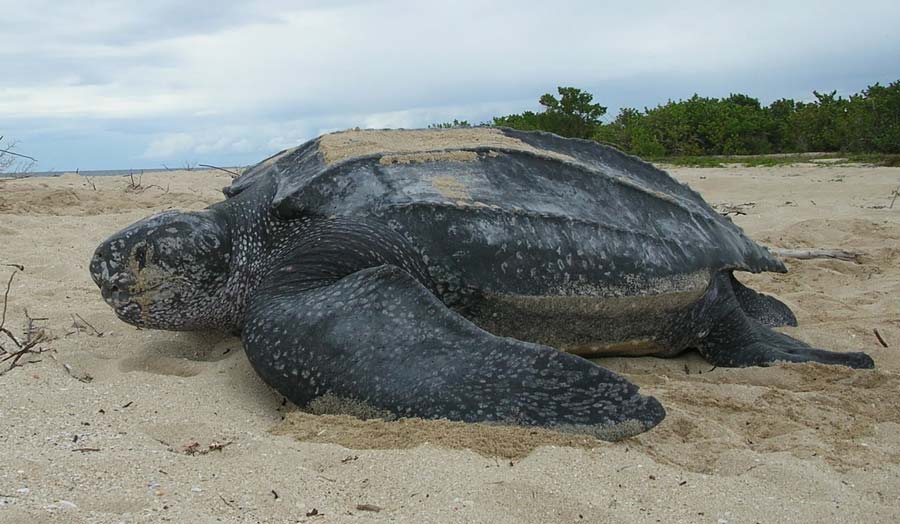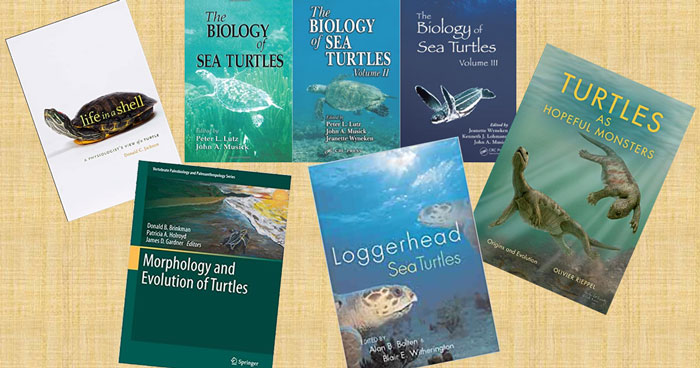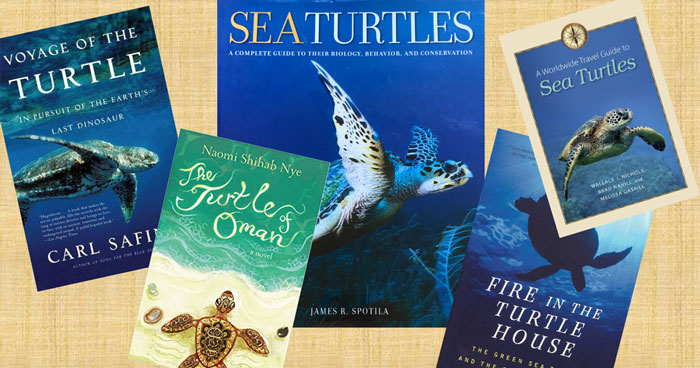
Welcome to ORP’s e-learning platform
Your digital resource
for all things sea turtles
Education is a powerful tool to increase awareness, engage people and stimulate action. It is a big part of ORP’s mission and an important aspect of our multifaceted approach to protecting sea turtles and their habitats. On our e-learning platform you will find courses and resources, both for sea turtle lovers in general and for the more science minded, about everything sea turtles. It is our wish that this free knowledge sharing hub will become an important environmental education resource to help guide aspiring young scientists and supplement existing educational tools for remote learning and school projects.
Courses
All courses are designed to learn at your own pace.
And the best part? They are totally free!
e-Turtle School – All About Sea Turtles
Everything you have ever wanted to know about sea turtles, from evolution to conservation. Suitable for all sea turtles lovers and those who want to learn more about these fascinating creatures.
Sea Turtle Science & Conservation
Deep dive into sea turtle science and conservation. Suitable for budding conservationists and those with an interest in the science surrounding turtles, their biology and conservation.
Sea turtle science videos
Watch our Sea Turtle Science in Minutes videos.
Protocols and infographics
Download ORP’s protocols and infographics. Click here for more languages.
Resources & publications by ORP
Read the latest scientific research papers published by ORP scientists, download sea turtle infographics and protocols, and find educational resources.
Sea turtle books for all ages
ORP’s Turtle Book Club has recommendations for some turtley good reads for everyone from children to scientists and everyone in between.
Sea turtle facts
Visit our Sea Turtle Facts page and find answers to all your sea turtle questions and more! If you have a question we have not answered, you can submit it on the Sea Turtle Fact Page and we will try our best to give you an answer.
Sea Turtles FAQ

Sea turtles can hold their breath for several hours, depending on their level of activity.
If they are sleeping, they can remain underwater for several hours. In cold water during winter, when they are effectively hibernating, they can hold their breath for up to 7 hours. This involves very little movement.
Although turtles can hold their breath for 45 minutes to one hour during routine activity, they normally dive for 4-5 minutes and surfaces to breathe for a few seconds in between dives.
However, a stressed turtle, entangled in a ghost net for instance, quickly uses up oxygen stored within its body and may drown within minutes if it cannot reach the surface.
Learn More About Sea Turtles – Free Online Courses
e-Turtle School – All About Sea Turtles
Everything you have ever wanted to know about sea turtles, from evolution to conservation. Suitable for all sea turtles lovers and those who want to learn more about these fascinating creatures.
Sea Turtle Science & Conservation
Deep dive into sea turtle science and conservation. Suitable for budding conservationists and those with an interest in the science surrounding turtles, their biology and conservation.
References:
- Hays GC, Akesson S, Broderick AC, Glen F, Godley BJ, Luschi P, Martin C, Metcalfe JD & Papi F 2001. The diving behaviour of green turtles undertaking oceanic migration to and from Ascension Island: dive durations, dive profiles and depth distribution. Journal of Experimental Biology 204: 4093-4098.
- Hays GC, Hochscheid S, Broderick AC, Godley BJ & Metcalfe JD 2000. Diving behaviour of green turtles: dive depth, dive duration and activity levels. Marine Ecology Progress Series 208: 297-298.
- Hochscheid S, Bentivegna F & Hays GC 2005. First records of dive durations for a hibernating sea turtle. Biology Letters 1: 82-86.
- Lutz PL and Musik JA (eds.) 1996. The Biology of Sea Turtles Volume I. CRC Press.
The actual documentation of a sea turtle’s age in the wild is difficult or nearly impossible. Individual turtles can be tracked for a shorter time of six month to three years with the help of satellite transmitters. Longterm studies rely on capture-recapture principle, just like our turtle photo id project. Each photo of a turtle represents a recapture event documenting that the individual is still alive.
A study of nesting green turtles in Hawaii observed female turtles returning to nest for up to 38 years after they were first identified. Assuming the average age at first nesting activity of 24 years, this would show that green turtles can live to up to at least 62 years.
Similar estimates have been made for loggerhead turtles.


References:
- Dodd C 1988. Synopsis of the biological data on the loggerhead sea turtle. Ecology 88.
- Humburg IH and Balazs GH 2014. Forty Years of Research: Recovery Records of Green Turtles Observed or Originally Tagged at French Frigate Shoals in Northwestern Hawaiian Islands, 1973-2013. NOAA Technical Memorandum NMFS-PIFSC-40.
When sea turtles are juveniles, it is very difficult to tell their sex by eye as they do not differ externally. However, after reaching sexual maturity male sea turtles develop a long tail, which houses the reproductive organ. The tail may extend past the hind flippers.
Female turtles have a short tail, which generally doesn’t extend more than 10 cm (4 inches) past the edge of the carapace. Male sea turtles (except leatherbacks) have elongated, curved claws on their front flippers to help them grasp the female when mating.
The sex of a sea turtle embryo is determined by the temperature of the sand: warm temperatures result in more females while cooler temperatures result in more males.


The olive and Kemp’s ridley sea turtles are the smallest species, growing only to about 70 cm (just over 2 feet) in shell length and weighing up to 45 kg (100 lbs). Leatherbacks are the largest sea turtles. On average leatherbacks measure 1.5 – 2m (4-6 ft) long and weigh 300 – 500 kg (660 to 1,100 lbs). The largest leatherback ever recorded was 2,56 m (8.4 ft) long and weighed 916 kg (2,019 lbs) !
Kemp’s Ridley

55.6-66.0 cm carapace length, weight range of 25-54 kg for nesting females.
References:
- Marquez-M R 1994. Synopsis of Biological Data on the Kemp’s Ridley Turtle, Lepidochelys kempi (Garman, 1880). NOAA Technical Memorandum NMFS-SEFSC-343.
Olive Ridley

Curved carapace length 52.5-80.0 cm, weight less than 50 kg (average 35.7 kg) for nesting females.
References:
- Qureshi M 2006. Sea turtles in Pakistan. In: Shanker K and Choudhury BC (Eds.). Marine Turtles of the Indian Sub- continent. Heydarabad: India Universities Press, pp. 217–224.Reichart HA 1993.
- Reichart HA 1993. Synopsis of biological data on the olive ridley sea turtle Lepidochelys olivacea (Eschscholtz 1829) in the western Atlantic. NOAA Technical Memorandum NMFS-SEFSC-336.
Hawksbills

Nesting females reported between 53.3 and 95.5 cm carapace length, with weight between 27.2 and 86.2 kg.
References:
- Witzell WN 1983. Synopsis of biological data on the hawksbill turtle, Eretmochelys imbricata (Linnaeus, 1766). No. 137. Food & Agriculture Org.
Green turtles

Nesting green females reported curved carapace length 75-134 cm, weight (after egg deposition) 45-250 kg (!).
References:
- Hirth HF 1997. Synopsis of the Biological Data on the Green Turtle Chelonia mydas (Linnaeus, 1758). Vol. 2. Fish and Wildlife Service, US Department of the Interior.
Flatbacks

Ones study (Ref. 1) found nesting females have a mean curved carapace length 86.3 cm, and mean weight of 67.4 kg. Another study (Ref. 2) found flatbacks to be between 87.5-96.5 cm.
References:
- Schäuble C, Kennett R and Winderlich S 2006. Flatback Turtle (Natator depressus) nesting at Field Island, Kakadu National Park, Northern Territory, Australia, 1990-2001. Chelonian Conservation and Biology 5: 188-194.
- Limpus CJ 1971. The Flatback Turtle, Chelonia depressa Garman in Southeast Queensland, Australia. Herpetologica 27: 431-446.
Loggerheads

Adult loggerhead turtles measure between 65 and 115 cm in curved carapace length and typically weigh between 40 and 180 kg. The largest recorded loggerhead weighed 545 kg and measured 213 cm in presumed total body length. On average, nesting, and therefore adult, female loggerheads have a curved carapace length of 65.1-114.9 cm and weigh between 40.0 and 180.7 kg. Males fall into the same size range (79.0-104.0 cm curved carapace length).
References:
- Brongersma LD 1972. European Atlantic turtles. Zoologische Verhandlingen 121, Leiden.
- Dodd C 1988. Synopsis of the biological data on the loggerhead sea turtle. Ecology 88: 1-119.
- Ernst CH and Lovich JE 2009. Turtles of the United States and Canada, 2nd edition. John Hopkins University Press.
Leatherbacks

143.8-169.5 cm curved carapace length, weight 259-506 kg recorded for nesting females all around the world. Largest ever recorded specimen was found dead on a beach on the coast of Wales. The adult male turtle weighed 916 kg and its shell was 256.5 cm long. An autopsy revealed that it had drowned.
References:
- Eckert KL and Luginbuhl C 1988. Death of a Giant. Marine Turtle Newsletter 43: 2-3.
- Eckert KL, Wallace BP, Frazier JG, Eckert SA and Pritchard PCH 2012. Synopsis of the Biological Data on the Leatherback Sea Turtle (Dermochelys coriacea). Biological Technical Publication BTP-R4015-2012, US Fish & Wildlife Service.
Sea turtles cannot breathe underwater, however they can hold their breath for long periods of time. Sea turtles can hold their breath for several hours depending on their level of activity. For instance, a resting turtle can remain underwater for 4-7 hours whereas a foraging individual may need to surface more frequently.
When turtles hold their breath, their heart rate slows significantly to conserve oxygen – up to nine minutes may pass between heart beats! Despite this adaptation, a stressed turtle – such as one entangled in ghost net – will deplete oxygen stores rapidly and may drown within minutes if unable to reach the surface.


References:
- Long dive interval during hibernation: Hochscheid S, Bentivegna F & Hays GC 2005. First records of dive durations for a hibernating sea turtle. Biology Letters 1: 82-86.
- Dive duration during activity: Hays GC, Akesson S, Broderick AC, Glen F, Godley BJ, Luschi P, Martin C, Metcalfe JD & Papi F 2001. The diving behaviour of green turtles undertaking oceanic migration to and from Ascension Island: dive durations, dive profiles and depth distribution. Journal of Experimental Biology 204: 4093-4098.
- Hays GC, Hochscheid S, Broderick AC, Godley BJ & Metcalfe JD 2000. Diving behaviour of green turtles: dive depth, dive duration and activity levels. Marine Ecology Progress Series 208: 297-298.












